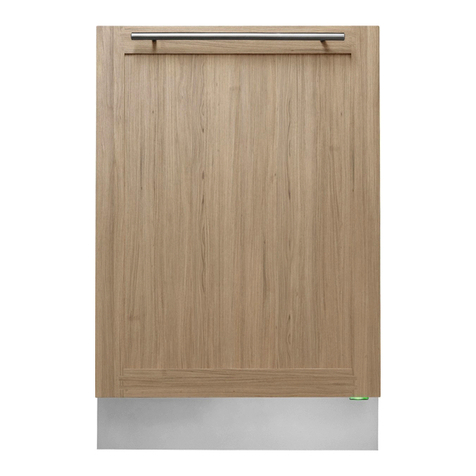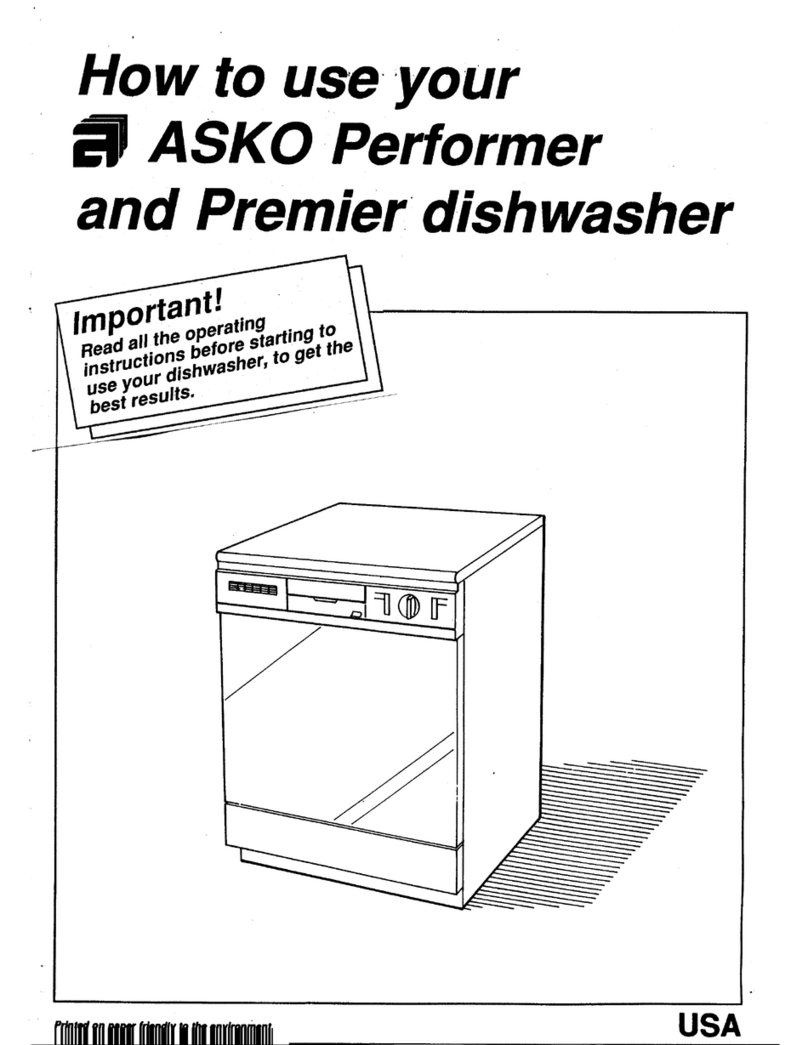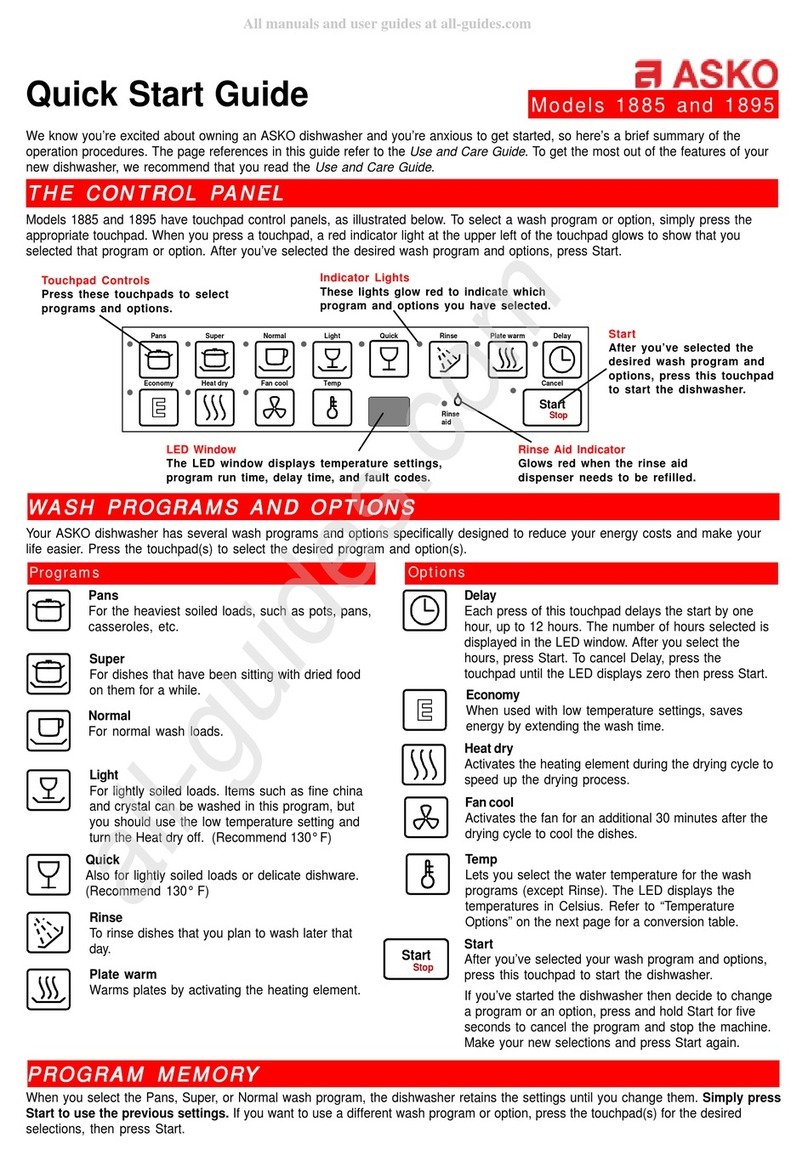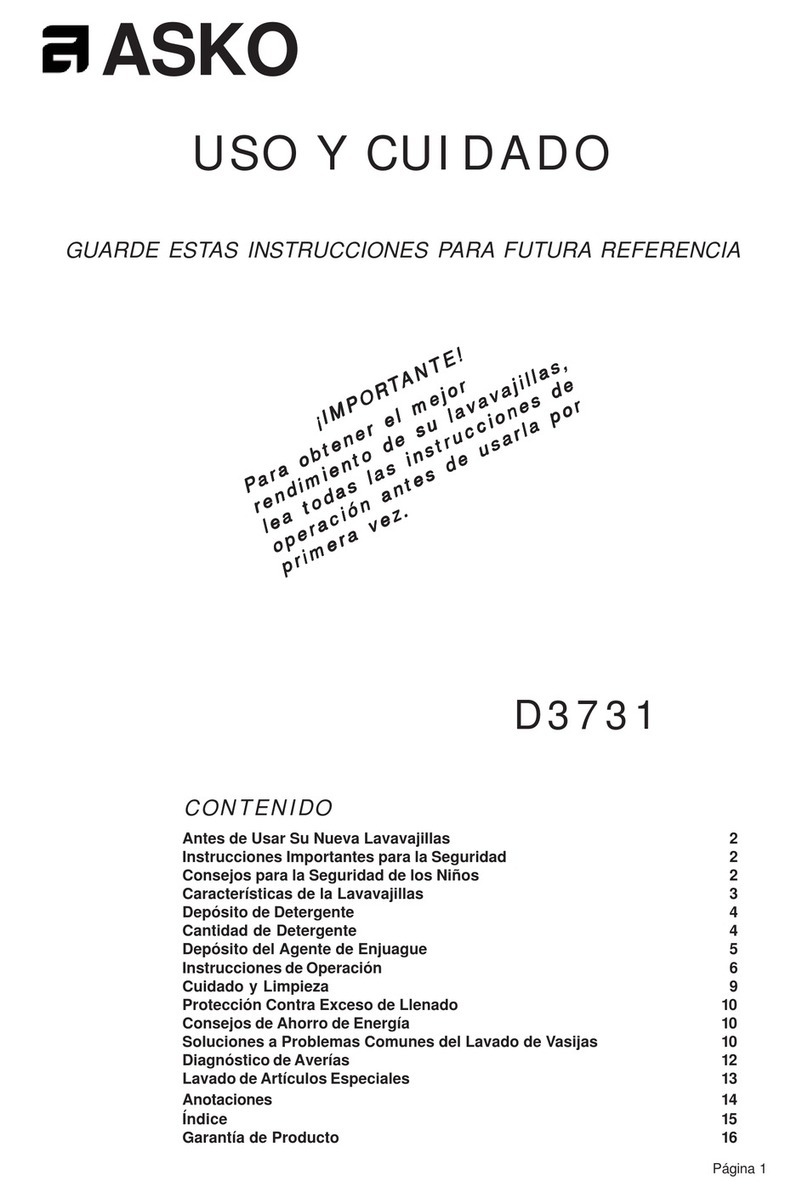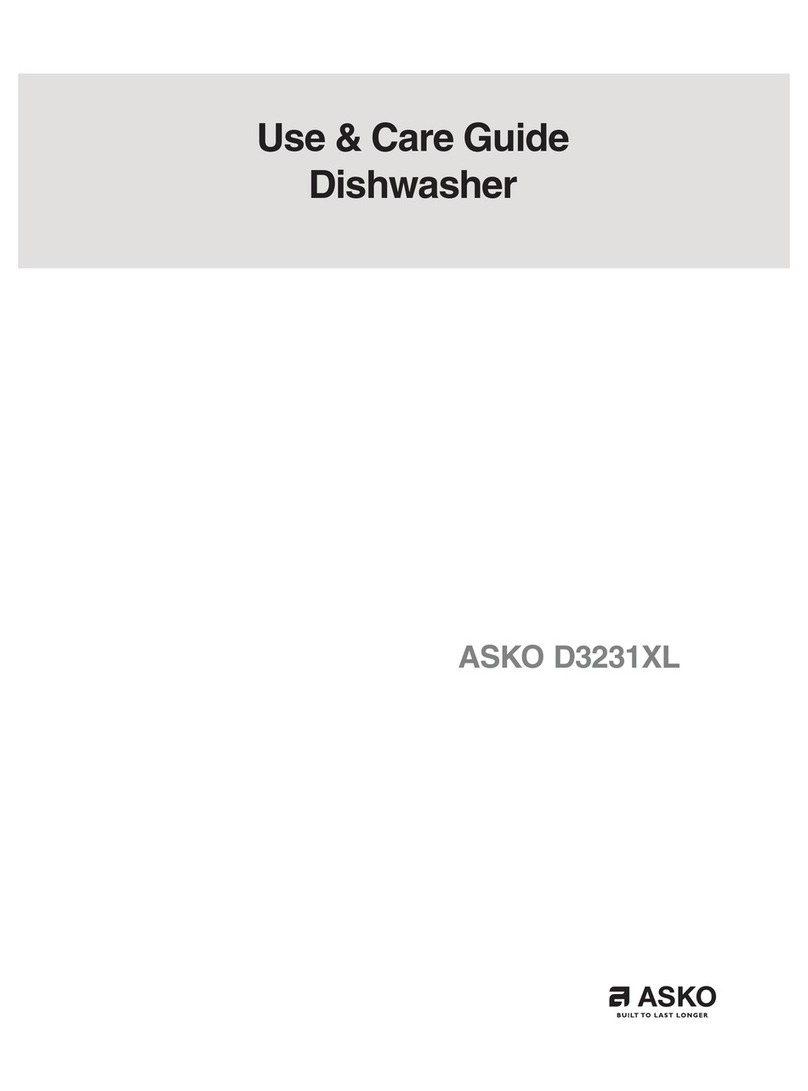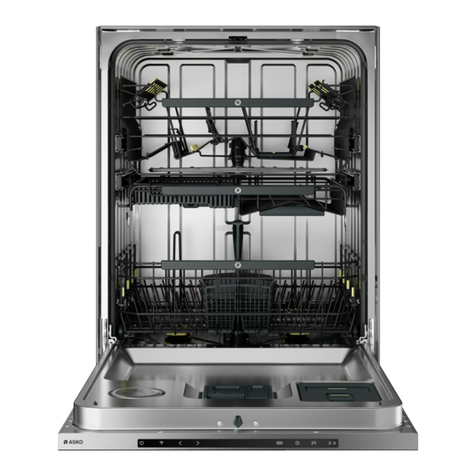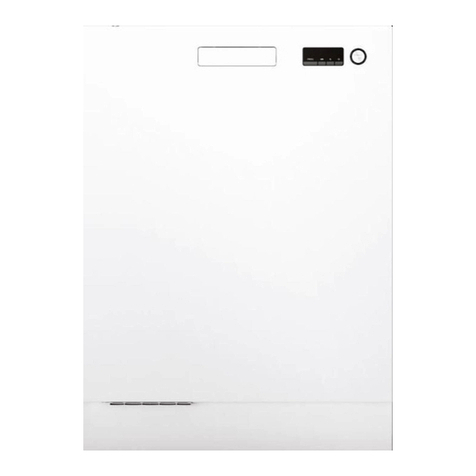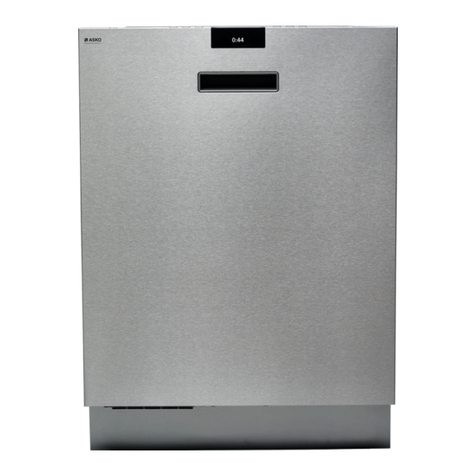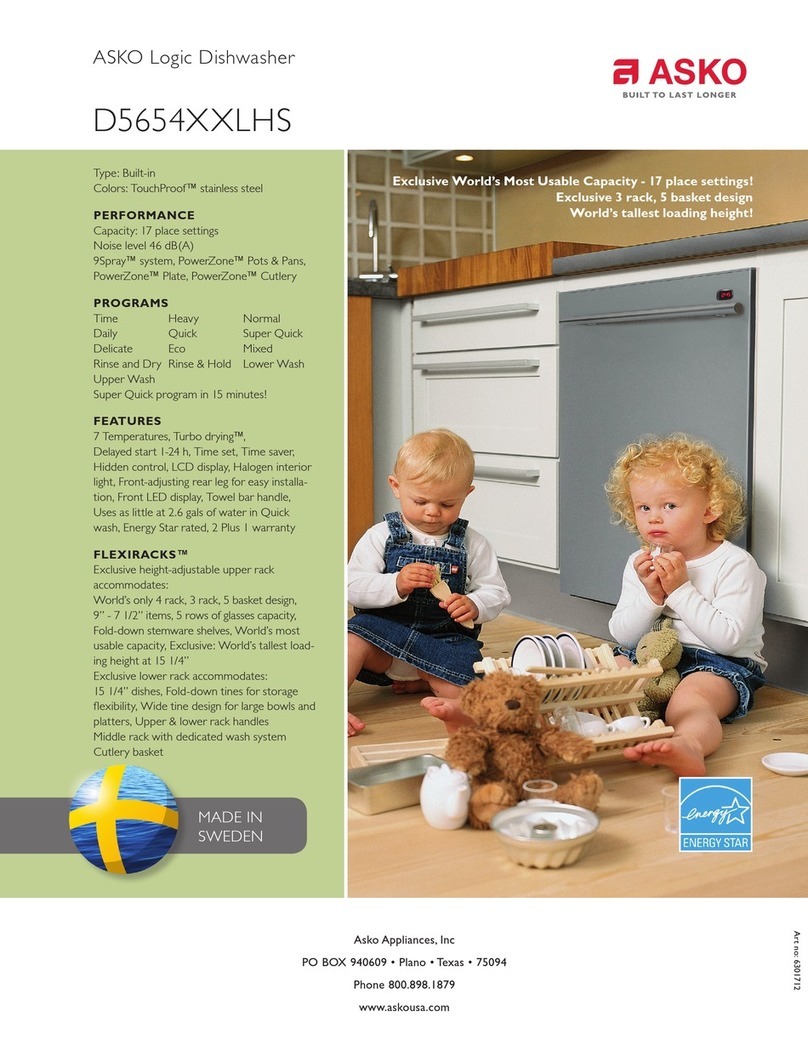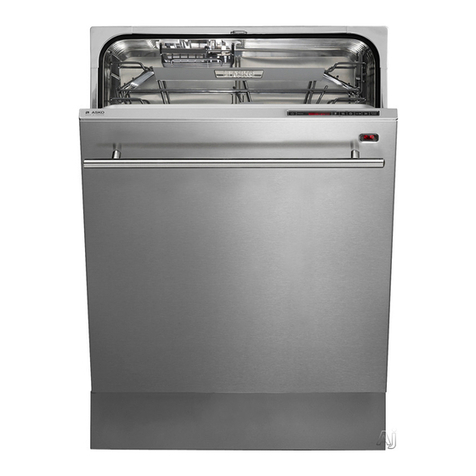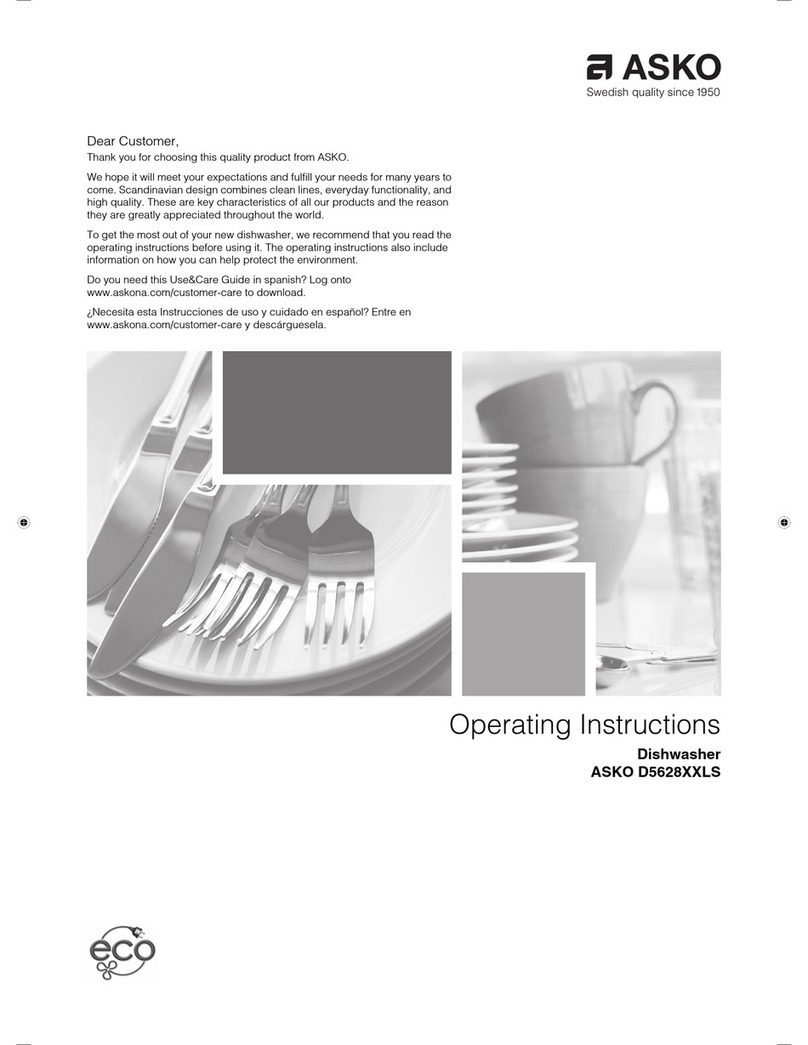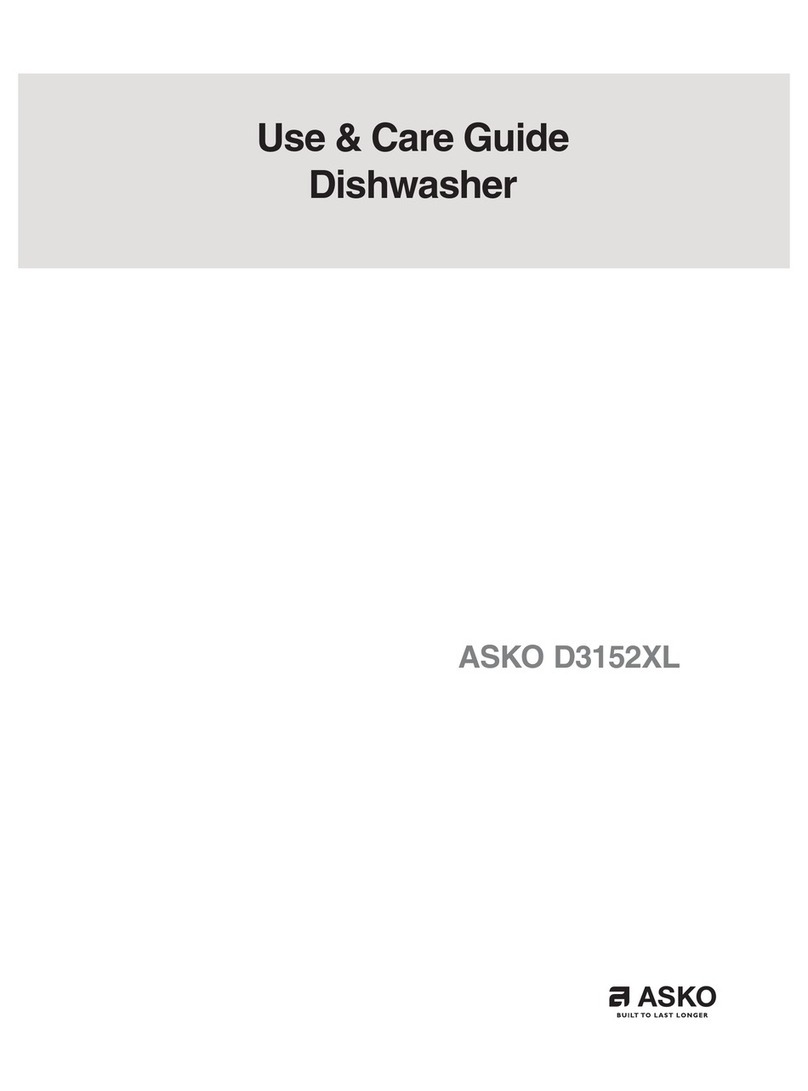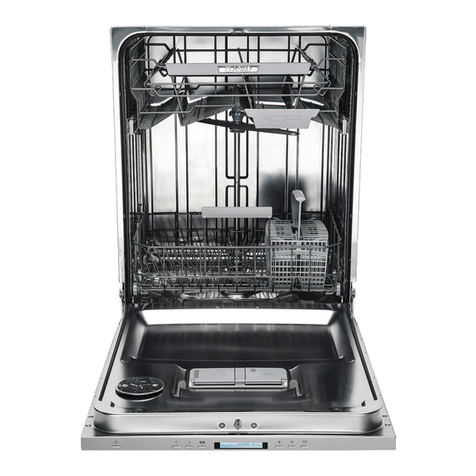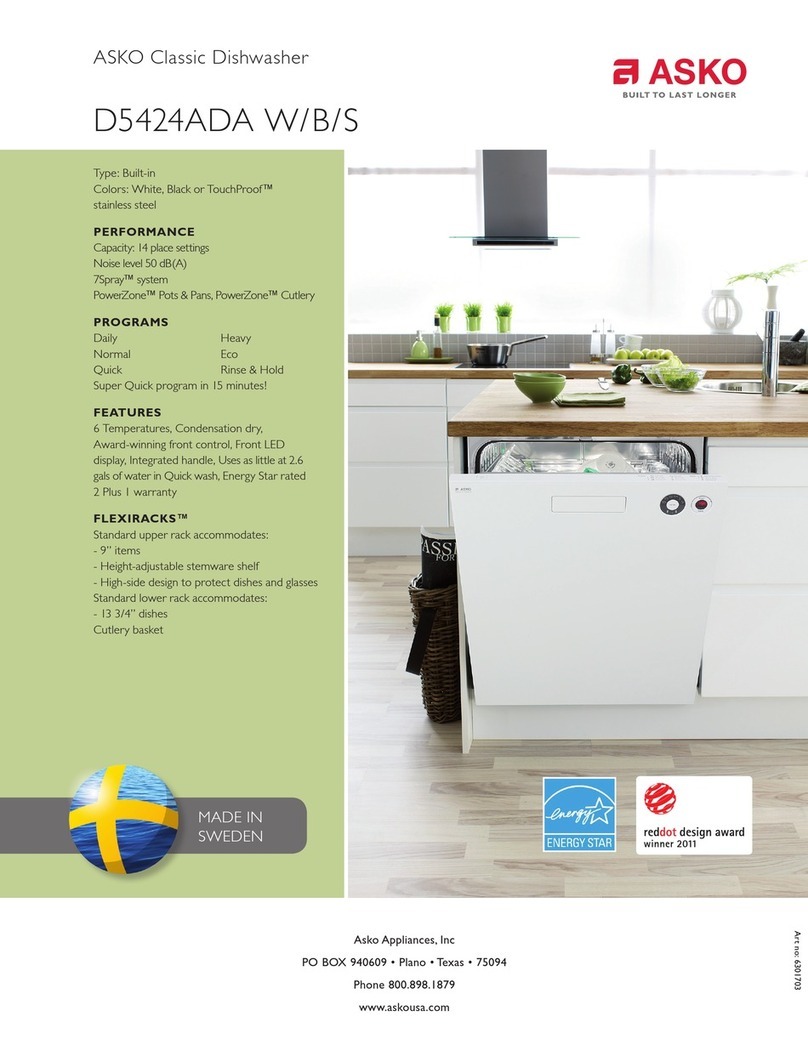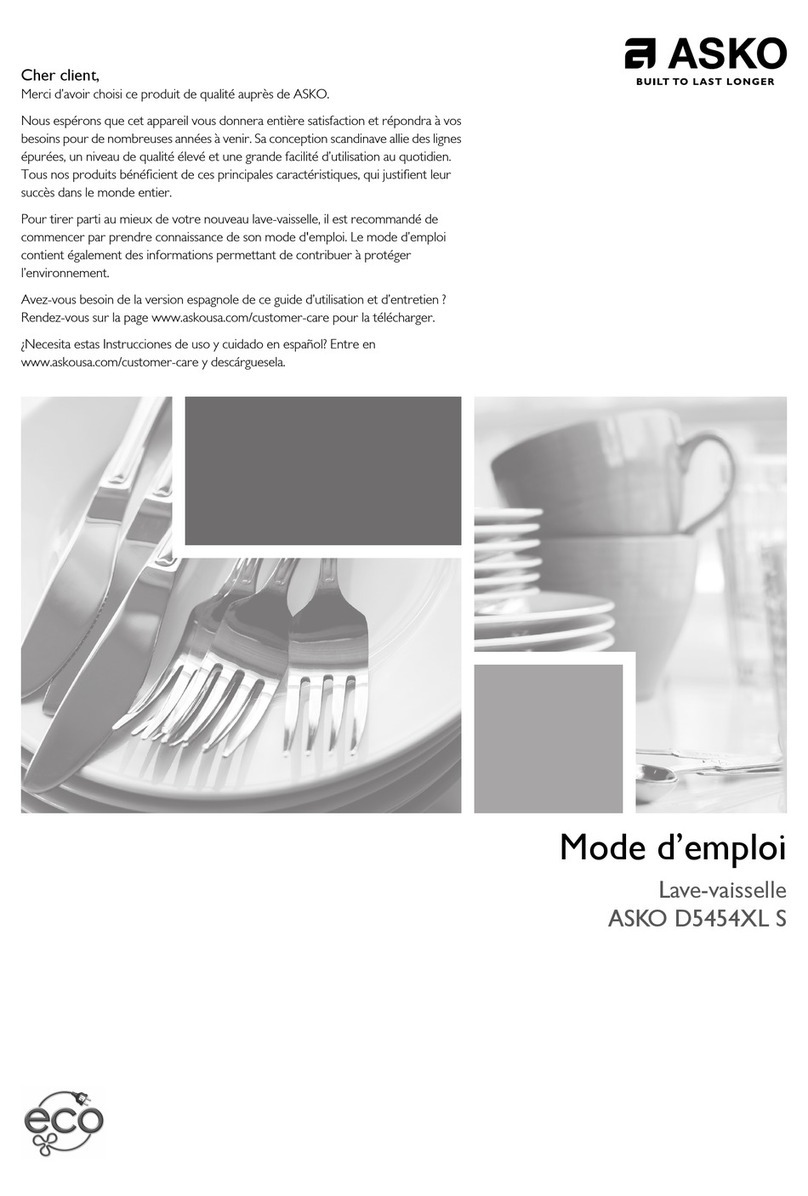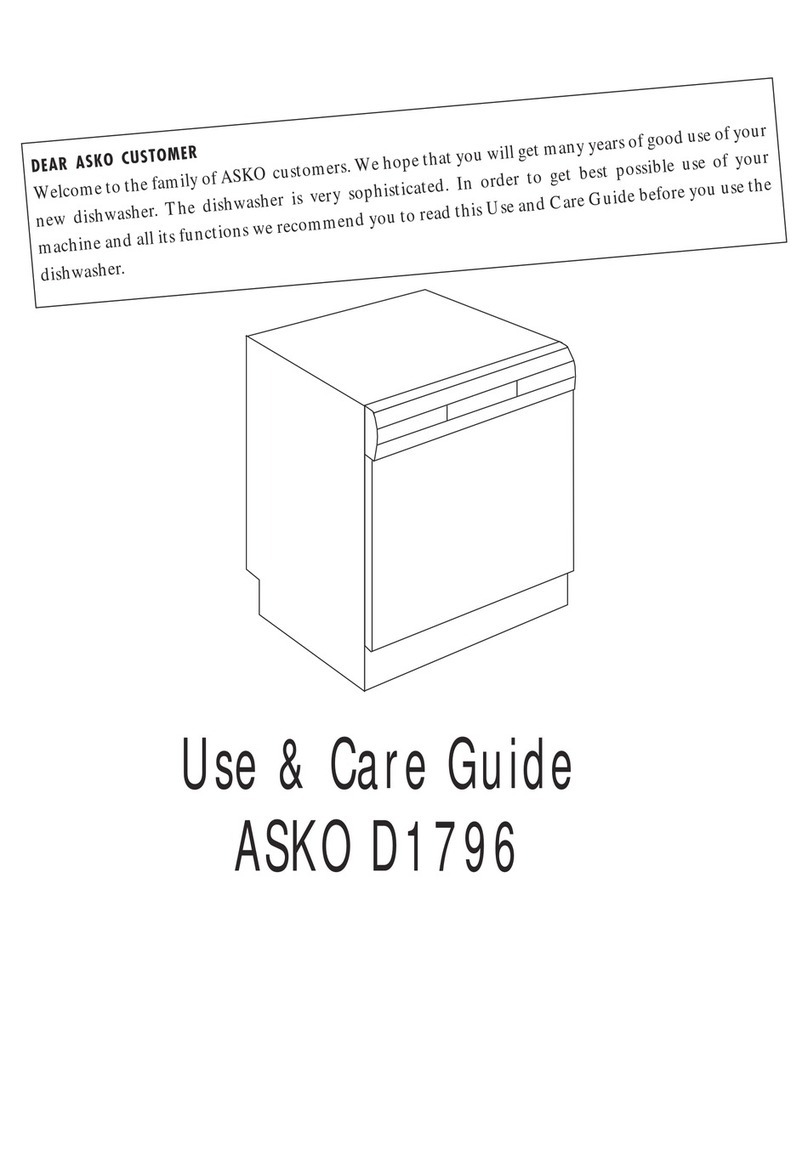
3Your dishwasher ........................................
3Welcome to our growing ASKO family! .......
4Safety instructions .....................................
5Activate child lock (Kid Safe™) ...................
5Installation ....................................................
5Winter storage/Transport .............................
5Overflow guard function ..............................
5Packaging ....................................................
6Disposal .......................................................
7Before washing for the first time ..............
71. Water hardness ........................................
72. Basic settings ..........................................
9Greener dishwashing ................................
9The dishwasher saves energy and water .....
10Loading the dishwasher ............................
10Fragile dishes ..............................................
10Loading affects the results ..........................
10The dishwasher's baskets ...........................
11Top cutlery tray ............................................
11Upper basket ...............................................
12Lower basket ...............................................
14Cutlery basket ..............................................
16Using the dishwasher ................................
16Add detergent ..............................................
17The main power switch ................................
17Select program ............................................
18Select program mode ..................................
18Select option ................................................
18Starting the dishwasher ...............................
19Time remaining ............................................
19Stopping or changing a program ................
19If you want to load more dishes ...................
19
If the dishwasher is turned off due to a power
failure ...........................................................
19Once the program has finished ...................
19How to get the best drying results ...............
20Unloading the dishwasher ...........................
21Program chart ..............................................
22Settings .......................................................
22Open the dishwasher's Settings menu ........
24Care and cleaning ......................................
24Top up rinse aid ...........................................
24Cleaning the filters .......................................
26Cleaning the spray arms ..............................
27Clean the dishwasher inside and out ..........
27Remove blockages ......................................
29Troubleshooting .........................................
34Installation ..................................................
34Safety instructions ........................................
35Transport protection for the door .................
35Placing the dishwasher ................................
36Affix the protective film ................................
36
Adjust the height and slide the dishwasher
into place .....................................................
37Drainage connection ...................................
38Connection to water supply .........................
39Electrical connection ...................................
39Screwing the dishwasher into place ............
41Dishwasher kick panel .................................
42ASKO Service .............................................
42Information about your product ...................
42Contact the service department ..................
43Technical information ................................
43Information on energy labelling ...................
43Technical data .............................................
43Information for test institute ..........................
Contents
